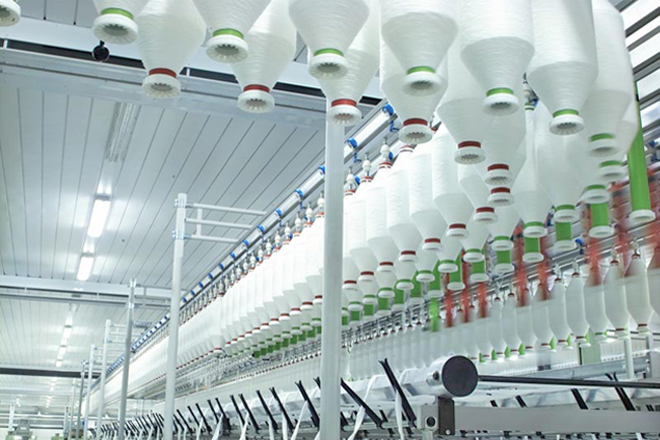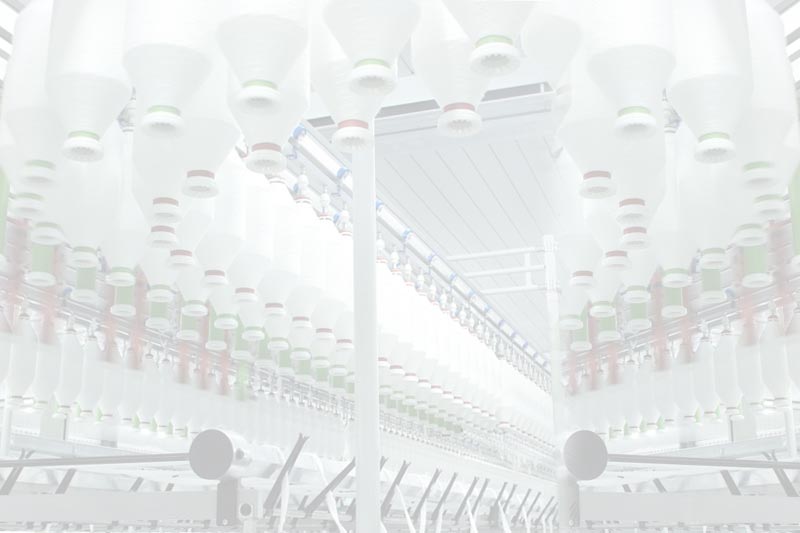



R. N. SPINNING MILLS LTD.
Notes to the Financial Statements
For the year ended December 31, 2010
1.00 The Company and its operations
1.01 Legal form of the Company
The Company was incorporated on November 4, 2004 as a ‘Private’ Limited Company by Shares Registered under the Companies Act 1994 as adopted in Bangladesh vide certificate of incorporation No. C-54808 (1493)/04. The company converted to ‘Public’ Limited Company on 20.02.2007.
1.02 Address of the Registered and Corporate office
The registered office of the company is located at M.L.Tower (5th floor), 1, East Rampura, DIT Road, Dhaka.
1.03 Nature of Business activities
The principal activities of the Company shall be to carry on the business of Textile Spinning Mills to produce 100% Synthetic Yarn / Acrylic Yarn for 100% export oriented dyeing / Textiles industries and export thereof.
1.04 Capital Structure of the Company:
Mr. Kim Jung Suk (Korean National) owns 26.29% of the fully paid up ordinary shares and 43,652,700, 9% redeemable Preference shares of R. N. Spinning Mills Limited as detailed at note # 12.03 and note # 13.00.
1.05 Production Unit
Production unit of the company is situated at Comilla Export Processing Zone and its status is category ‘B’.
2.00 Summary of significant accounting as per rules
2.01 Basis of preparation and presentation of the financial statements
The financial statements have been prepared and the disclosures of information made in accordance with the requirements of the Companies Act 1994, the Securities and Exchange Rules 1987 as applicable, and BAS’s adopted by the Institute of Chartered Accountants of Bangladesh (ICAB), & Bangladesh Financial Reporting Standard (BFRS) as long as applicable for the company. The balance sheet and profit and loss account have been prepared According to BAS 1 Presentation of Financial Statements based on accrual basis of Accounting following going concern assumption under generally accepted accounting Principles and practices in Bangladesh and cash flow statement according to BAS 7.
2.02 Accounting convention and assumption
The financial statements are prepared under the historical cost convention.
2.03 Principal accounting policies
The specific accounting policies have been selected and applied by the company’s management for significant transactions and events that have a material effect within the Framework for the preparation and presentation of financial Statements. Financial Statements have been prepared and presented in compliance with applicable BAS. Previous year’s figures were re-arranged for companies, there were no significant changes in the accounting policies and valuation policies affecting the financial position and performance of the Company. However, changes made to the presentation are explained in the note for each respective item.
Accounting and valuation methods are disclosed for reasons of clarity. The company classified the expenses using the function of expenses method as per BAS 1.
2.04 Application Accounting Standards of the company
The following BAS are applicable to the financial statements for the year under review:
BAS 1 Presentation of Financial Statements
BAS 2 Inventories
BAS 7 Cash Flow Statements
BAS 8 Accounting policies, Changes in Accounting Estimates and Errors
BAS 10 Events after the Balance sheet Date
BAS 16 Properties, Plant and Equipment
BAS 17 Leases
BAS 18 Revenue
BAS 19 Employee Benefits
BAS 21 The effects of Changes in Foreign Exchange Rates
BAS 22 Business Combination
BAS 23 Borrowing Costs
BAS 24 Related Party Disclosures
BAS 26 Accounting and reporting by retirement benefit plans
BAS 27 Consolidated Financial Statements and accounting for
Investment in Subsidiary
BAS 33 Earnings per Share
BAS 37 Provisions, Contingent liabilities and Contingent Assets
BAS 38 Intangible Assets
2.05 Property, Plant and equipment
Tangible fixed assets are accounted for according to BAS 16 Property, Plant and Equipment at Historical cost less accumulated depreciation and the Capital work-in-progress is stated at cost. Both tangible and intangible assets are depreciated/ amortized according to the Straight-line depreciation method.
The gain or loss arising on the disposal or retirement of an asset is determined as the difference between the sales proceeds and the carrying amount of the asset and is recognized as non operating income and reflected in the profit and loss account.
2.06 Depreciation of fixed assets
Depreciation is provided on reducing balance method except Leasehold land Development (Comilla EPZ) on the cost at which the asset is carried in the books of account over the lease term of 30 years.
Depreciation is provided on Leasehold land Development (comilla EPZ) on straight-line method.
Half year’s depreciation has been charged on additions irrespective of the date of acquisition.
The depreciation /amortization rate(s) are as follows:
Category of fixed assets Rate %
Leasehold land Development (Comilla EPZ) 3.33
Buildings – on leasehold land 2.50
Plant & Machinery 10
Humidification Plant (HAVC) 10
Generator 10
Folk Lift 10
Electrical Installation 10
Boiler 10
Transformer 10
Air Compressor 10
Water and Gas Installation 10
Chiller Plant 10
Mixture Machine 20
Office equipment 10
Furniture, fixtures & fittings 10
By-Cycle 20
Cookeries 20
2.06.1 Accelerated depreciation allowance
The Company has entitled to Accelerated depreciation has been charged vide order Ref: no#. 269-L/86, dated 1 July, 1986 on capital machinery as per section 10 of the Bangladesh Export Processing Zones Authority Act 1980 (XXXVI of 1980) to the extent of hundred percent of the actual cost of the machinery or plant within the tax exemption period of five or ten years.
2.07 Valuation of stocks
Inventories are stated at the lower of cost or net realizable value in compliance with the requirements of Para 21 and 25 of BAS 2.
Category of stocks Basis of valuation
Raw & packing materials including w-i-p : Moving average (Weighted) Cost
Finished Goods at Factory : At lower of cost or net estimated
Realizable value
At warehouses : At cost
Stores Items : At cost
Materials in-transit : Book value i.e. cost so far incurred
Cost comprises of the value of materials and attributable direct labor, depreciation & production overheads.
2.08 Current Liabilities
The current portion of long term liabilities payable within one year from the balance sheet date may be calculated at Tk. Nil as follows:
|
Current Portion of Long Term Loan |
31-12-2010 |
31-12-2009 |
|
Mid Term Project Investment |
- |
111,047,555 |
|
Short Term Project Investment |
- |
32,823,104 |
|
Short Term Project Investment (SIBL) |
- |
68,500,000 |
|
Total: |
- |
212,370,659 |
2.09 Bills Receivable
Bills Receivable is carried at invoice amount without making any provision for doubtful debts, because of the fact that sales / export are being based on 100% confirmed letter of credit basis with fixed maturity dates.
2.10 Cash and cash equivalents
Cash and cash equivalents include cash in hand, cash at banks, term deposits, etc which are available for use by the company without any restrictions. There is an insignificant risk of change in value of the same.
2.11 Foreign currency transaction
Foreign currency transactions are recorded at the applicable rates of exchange ruling at the transaction date in accordance with BAS 21 (the Effects of changes in Foreign Exchange Rates). Foreign currency transaction are translated at the balance sheet date are charged/credited to the profit and loss account whenever arise.
2.12 Creditors and accrued expenses
2.12.1 Trade and other payables
Liabilities are recorded at the amount payable for settlement in respect of goods and services received by the company.
2.12.2 Provision
The preparation of financial statements in conformity with Bangladesh accounting standard BAS 37 Provisions, Contingent Liabilities and Contingent Assets requires management to make estimates and Assumption that affect the reported amounts of revenues and expenses, assets and liabilities, and the Disclosure requirements for contingent assets and liabilities during and at the date of the financial statements.
In accordance with the guidelines as prescribed by BAS 37 provisions were recognized in the following situations:
✓ When the Company has a present obligation as a result of past event;
✓ When it is probable that an outflow of resources embodying economic benefits will be required to settle the obligation; and
✓ Reliable estimates can be made of the amount of the obligation.
We have shown the provisions in the balance sheet at an appropriate level with regard to an adequate provision for risks and uncertainties. An amount recorded as a provision represents the best estimate of the probable expenditure required to fulfill the current obligation on the balance sheet date.
2.13 Employee benefits (BAS 19)
2.13.1 Employees’ retirement benefit & gratuity fund
The company has a plan to established Gratuity Fund and as such the Board of Directors passed a resolution at its meeting held on 24th August 2008 . Fund will be created based on the valuation and recommendation of actuary. The Company will introduce gratuity scheme within shortest possible time.
2.13.2 Staff provident fund
The Company is going to maintain a contributory provident fund for all eligible permanent employees with effect from March 2009 in compliance to the requirement of BEPZA rules.
2.14 Taxation
Provision is not made because R.N Spinning Mills Limited situated in Comilla export processing zone. As per income tax regulation for EPZ ref. # IRD SRO No. 289-Law/89, dated 19 August,1989, all industries operation in the export processing zone of Bangladesh have been exempted from payment of income tax for a period of 10 years from the date an industry goes into commercial production.
2.15 Contingent liabilities and assets
Contingent liabilities and assets are current or possible obligations or assets, arising from past events and whose existence is due to the occurrence or non-occurrence of one or more uncertain future events which are not within the control of the company. In accordance with BAS 37 Provisions, Contingent Liabilities and Contingent Assets are disclosed in the notes to the financial statements.
2.16 Revenue recognition
In compliance with the requirements of BAS 18 Revenue, revenue is recognized only when;
a) The products are invoiced and dispatched to the customers;
b) Interest income is accrued on a time basis by reference to the principal outstanding at the effective interest rate applicable;
c) Income from export is recognized at delivery of the consignment on accrual basis.
2.17 Borrowing costs
In compliance with the requirements of BAS 23 Borrowing Costs, borrowing costs of operational. Period on short term loan and overdraft facilities from The City Bank Ltd and Bank Asia Ltd. was charged off as revenue expenditure as they incurred.
2.18 Lease arrangements
The company has 2 lease arrangements of 30 years with Bangladesh Export Processing Zone (BEPZA) for industrial plot # 100-1007 & 127-134. The lease is classified as an operating lease as it dose not transfer substantial risks and rewards incident to ownership consistent with the view laid down in BAS 17 Leases. The total area is 32,000 Sq meter.
2.18.1 Measurement of lease payments
Lease payments (excluding cost for services such as insurance and maintenance) are recognized as expense in the income statement.
2.19 Intangible Assets
In compliance with the requirements of BAS 38 intangible assets are usually absorbed as revenue charges as and when incurred, as being not that material in the company’s and / or local context.
2.20 Repairs, upkeep and maintenance charges
These are usually charged out as revenue expenditure in the period in which it is incurred.
2.21 Bad and doubtful debts
We are not making any provision for bad and doubtful debts because our sales / export are based on 100% confirm letter of credit doing with fixed maturity date.
2.22 Advertising and promotional expenses
All costs associated with advertising and promotional activities are charged in the year they were incurred.
2.23 Cash flow statement
Statement of Cash Flows is prepared principally in accordance with BAS 7 Cash Flow Statement and the cash flows from operating activities have been presented under direct method as required by the Securities and Exchange Rules 1987 and considering the provisions that “Enterprises are Encouraged to Report Cash Flow From Operating Activities Using the Direct Method”.
2.24 Earning per shares
The Company calculates Earning per Share (EPS) in accordance with BAS 33 Earning per share, which has been shown on the face Profit and Loss account the same has been calculated dividing surplus available for ordinary share holders by weighted average number of ordinary shares outstanding at the end of the year.
2.24.1 Basic earnings
This represents earnings for the year attributable to the ordinary shareholders. As there was no minority interest or extra ordinary items, the net profit after tax for the year has been considered as fully attributable to ordinary shareholders.
2.24.2 Weighted average number of ordinary shares outstanding during the year
Computation of weighted average number of ordinary shares are not required as number of shares outstanding has been changed only by Bonus Share during the year under review.
2.24.3 Related Party Disclosure
The company has no transaction with related party in the normal course of business except the following:
Equity Participation:
M L Dying Limited owns 20,420,000 ordinary shares of Tk.10/- each at per amounting Tk. 204,200,000 being @ 19.78% of total ordinary shares of RN Spinning Mills Ltd.
Business Transaction
|
SL# |
Name of company |
Nature of transaction |
Balance as at 31-12-2010 (Taka) |
|
01. |
M. L. Dying Limited |
Bills Receivable (Trade) |
232,423,128 |
2.24.4 Reporting period:
The financial period of the Company covers one calendar year from 1st January to 31st December consistently.
